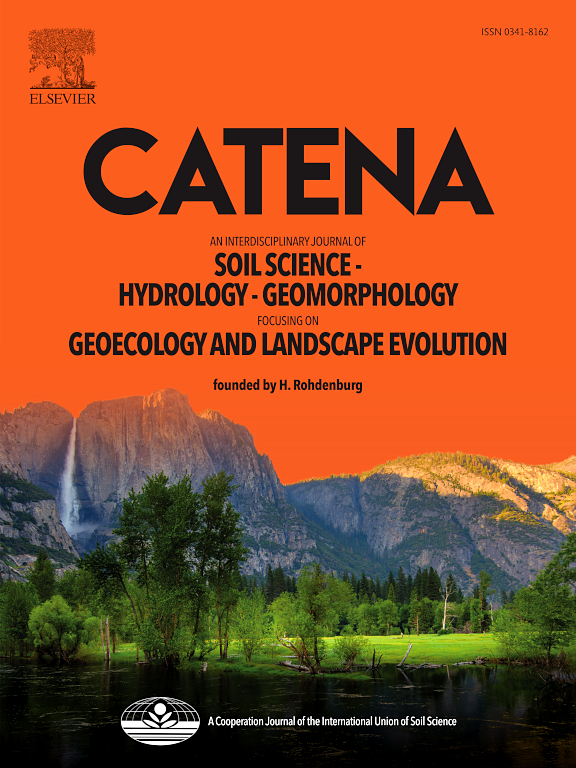IF 5.4
1区 农林科学
Q1 GEOSCIENCES, MULTIDISCIPLINARY
引用次数: 0
摘要
土壤有机碳(SOC)对气候变暖的响应程度取决于其稳定性。然而,由于数据有限,SOC 稳定性的空间模式和驱动因素仍不清楚,尤其是在高寒地区。热分析可揭示 SOC 的能量密度,从而间接反映其稳定性。本研究利用热重指数(TG-T50)来量化 SOC 的热稳定性,并利用核磁共振波谱分析了青藏高原各地 SOC 分子组成的特征。研究发现,SOC 的热稳定性从青藏高原的西北部向东南部递减。SOC热稳定性与分子组成之间存在很强的正相关性(r = 0.71,P < 0.001)。结构方程建模结果表明,生态系统类型是影响 SOC 热稳定性的最重要因素,其次是矿物质和气候变量。生态系统类型的变化不仅会改变土壤碳输入的质量,还会涉及气候和土壤特性的变化,从而影响 SOC 的稳定性。这些发现突出表明,SOC 的稳定性是一种依赖于生态系统的特性。研究结果表明,SOC 的热稳定性受其分子组成、矿物保护和 QTP 中生态系统类型的影响。这些发现为更全面地了解 QTP 上的 SOC 稳定性提供了大量证据,并有助于预测 SOC 随气候变化而发生的动态变化。本文章由计算机程序翻译,如有差异,请以英文原文为准。
Mineral, molecular composition and ecosystem type jointly determine the stability of soil organic carbon on the Qinghai-Tibetan Plateau
The magnitude of soil organic carbon (SOC) response to climate warming is contingent upon its stability. However, due to limited data, the spatial patterns and drivers of SOC stability remain unclear, particularly in alpine regions. Thermal analysis reveals the energy density of SOC, thus indirectly reflecting its stability. This study utilized the thermogravimetric index (TG-T50) to quantify the thermal stability of SOC and employed Nuclear Magnetic Resonance spectroscopy to characterize its molecular composition across the Qinghai-Tibetan Plateau (QTP). SOC thermal stability was found to decrease from the northwest to the southeast of the QTP. A strong positive correlation was observed between SOC thermal stability and molecular composition (r = 0.71, P < 0.001). Structural equation modeling results indicated that ecosystem type was the most important factor influencing SOC thermal stability, followed by mineral and climate variables. Changes in ecosystem type not only alter the quality of soil carbon inputs but also involve variations in climate and soil properties, thereby affecting SOC stability. Those findings highlight that SOC stability is an ecosystem-dependent property. The results show that SOC thermal stability is governed by its molecular composition, mineral protection, and ecosystem type in the QTP. These findings provide substantial evidence towards a more comprehensive understanding of SOC stability on the QTP and assist in predicting the dynamic changes of SOC in response to climate change.
求助全文
通过发布文献求助,成功后即可免费获取论文全文。
去求助
来源期刊

Catena
环境科学-地球科学综合
CiteScore
10.50
自引率
9.70%
发文量
816
审稿时长
54 days
期刊介绍:
Catena publishes papers describing original field and laboratory investigations and reviews on geoecology and landscape evolution with emphasis on interdisciplinary aspects of soil science, hydrology and geomorphology. It aims to disseminate new knowledge and foster better understanding of the physical environment, of evolutionary sequences that have resulted in past and current landscapes, and of the natural processes that are likely to determine the fate of our terrestrial environment.
Papers within any one of the above topics are welcome provided they are of sufficiently wide interest and relevance.
 求助内容:
求助内容: 应助结果提醒方式:
应助结果提醒方式:


